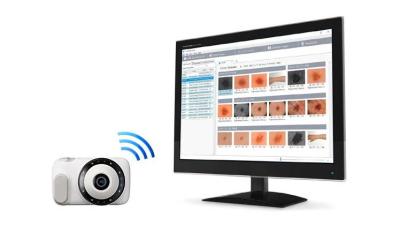More than half a century into its life span as a prolific producer of wristwatches, digital musical instruments, calculators and more, Casio has ventured back into the world of medical devices.
The Japanese electronics giant recently received the FDA’s signoff for a scope and camera system designed to help dermatologists capture high-quality photos of patients’ skin for closer observation. With the agency’s clearance, Casio said it will begin rolling out the system on its U.S. e-commerce site by next month.
The latest foray into medtech comes more than 30 years after Casio’s last FDA clearance. Back in 1991, the regulator OK’d its BP-100 watch, which was designed to collect blood pressure readings. Though it has since been discontinued and was among the first consumer devices to integrate blood pressure measurements—decades ahead of the current flood of smartwatches—a recent analysis found that the BP-100’s novel technology offered a surprisingly “great chance of accuracy.”
Casio’s new DZ-D100 Dermocamera and DZ-S50 Dermoscope are marketed toward healthcare providers rather than consumers.

The camera, which was first launched in Japan in 2019, can collect ordinary photos and, with the lens directly touching the skin, extremely close-up shots using the same lens. It’s designed to be much more lightweight and easier to manage than other heavy, bulky dermatological cameras that often require multiple lenses or devices.
The Dermocamera also simultaneously takes polarized, non-polarized and UV photos, allowing physicians to study an affected area’s color and structure, record its position on the surface of the skin and outline its exact margins, respectively—and all from the same angle.
The scope, meanwhile, was introduced in Japan in early 2020. Its wide lens offers a 40.5-millimeter view, helping dermatologists capture images of larger areas of skin than can be photographed with the Dermocamera. It can take either polarized or non-polarized images and can be upgraded with an additional magnetic lens to increase its magnification.
RELATED: Google debuts AI-powered app to help consumers identify common skin conditions
All of the images taken with Casio’s devices can then be examined more closely using the company’s D’z Image Viewer software. The photos transfer via Wi-Fi to the image management program, where they’re automatically sorted into predetermined folders and displayed with scale information and a measurement function.
The D’z Image system was developed in 2015 with an aim of helping dermatologists brush up on their skills in examining and analyzing images of skin lesions.
Amid the launch of the dermatological devices and accompanying software, Casio is already planning its next move in medtech, with a continued focus in dermatology. Up next in its medical device pipeline is a software system that will use artificial intelligence to help identify signs of skin cancer in uploaded images.